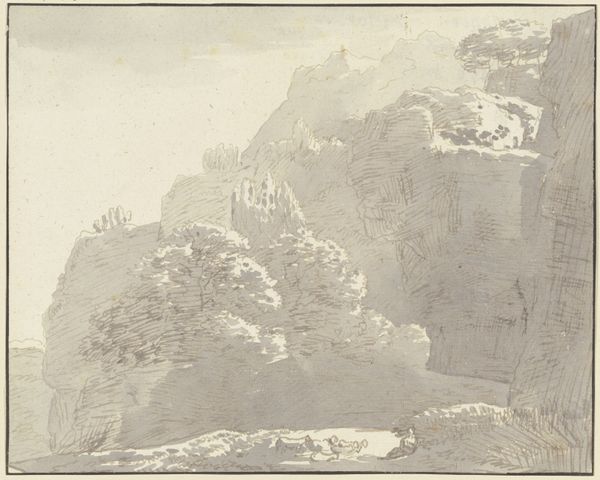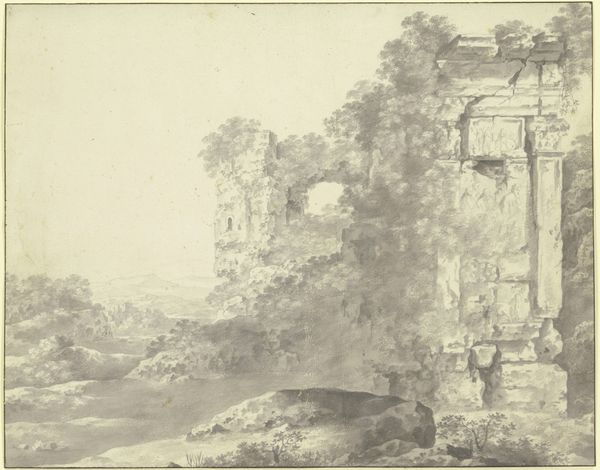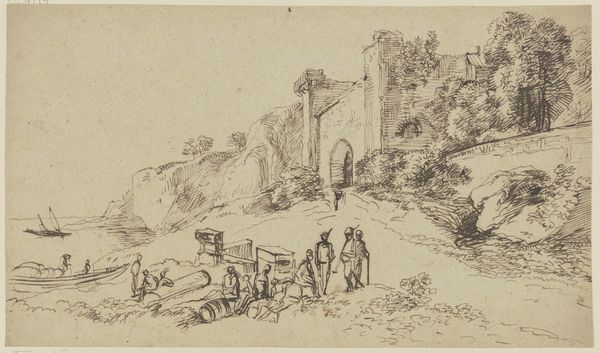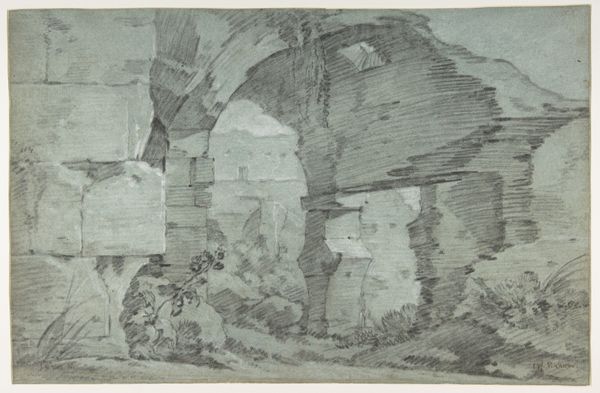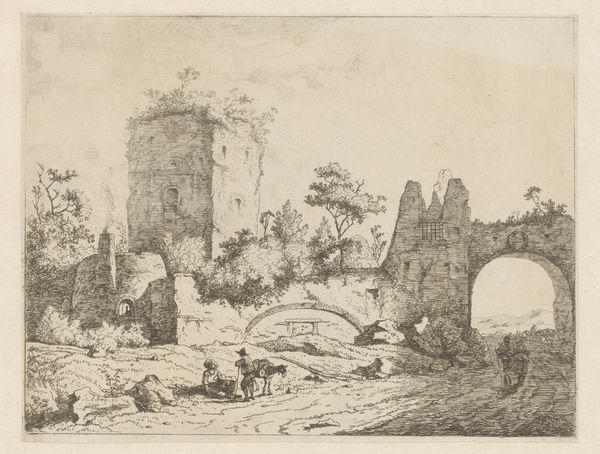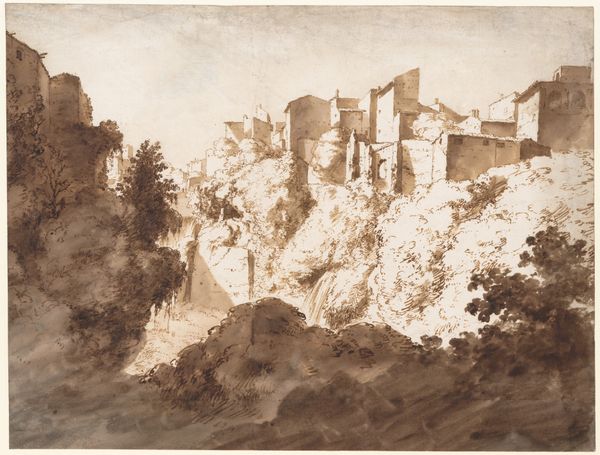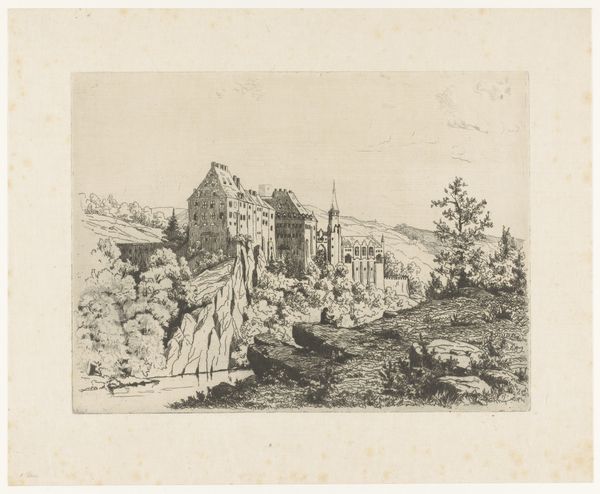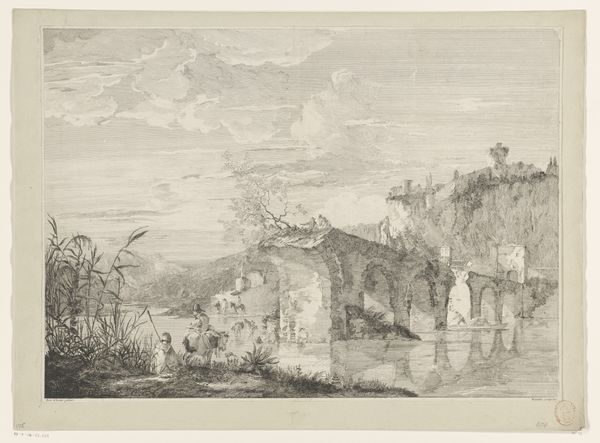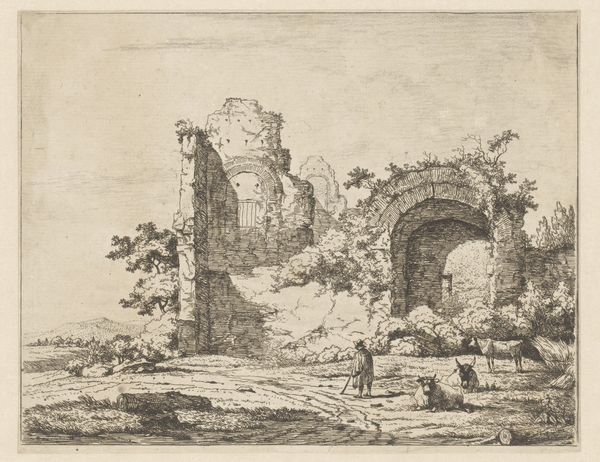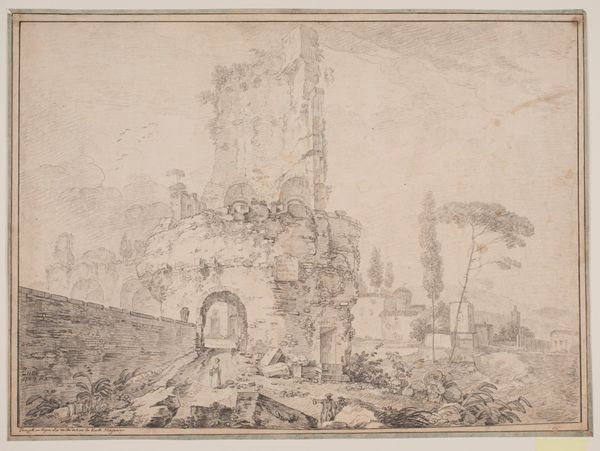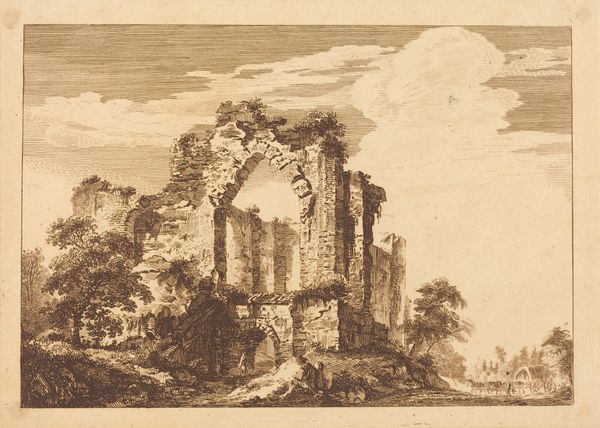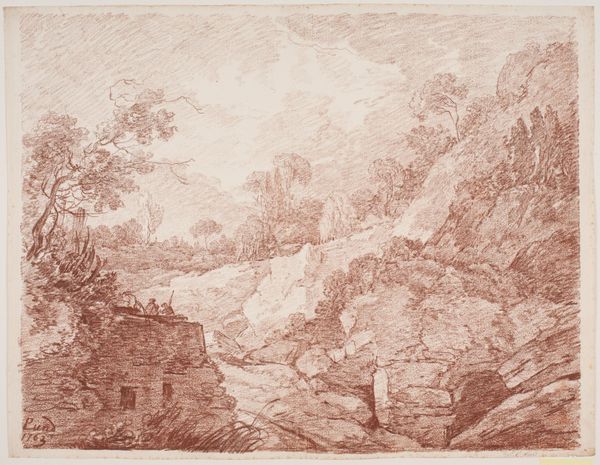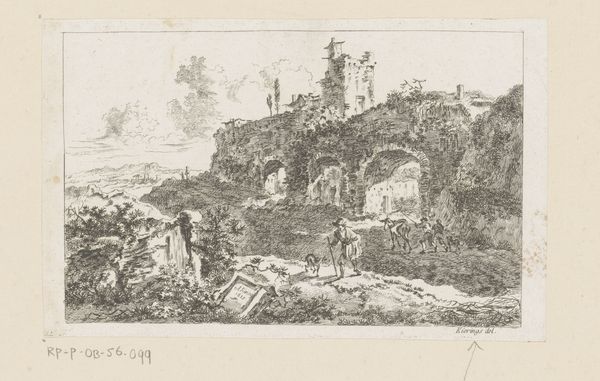
Dimensions: Sheet: 14 1/4 x 20 3/16 in. (36.2 x 51.2 cm)
Copyright: Public Domain
Editor: So, this is Joseph Benoît Suvée’s "Ruins of the Colosseum," done sometime between 1770 and 1780. It’s a drawing, a print, an etching—looks like a whole blend of media. The warm, reddish tones give it this feeling of faded grandeur, almost like a memory. What’s your take on this piece? Curator: Faded grandeur is spot on. It whispers of time’s relentless tick-tock. Suvée captures that melancholic beauty found in ruins – the sort that tickled the Romantics' fancy. It is, if you will, a carefully choreographed dance between the epic and the elegiac. I wonder, what does this vision of Rome tell us about our contemporary obsessions with history, and, dare I say, decline? Editor: It's interesting how you put that; thinking about *our* obsession. The way the Colosseum is sort of being eaten away by nature in the image makes me think of humanity’s mark, eventually, being erased. Is that too dramatic? Curator: Not a bit! Think about it – Suvée isn't just documenting a historical site. He's engaging with this whole 18th-century vibe of pondering mortality, impermanence... We’re staring at a symbol not only of Roman power but of its vulnerability. And what could be more human than obsessing about leaving a lasting impression when everything’s, you know, turning to dust? Editor: That’s true, it’s a little vain if you think about it, wanting to leave your mark on everything. So it’s not just a picture, it's a little bit of philosophy. Curator: Precisely! Art is, after all, a sneaky way of asking the big questions. Suvée makes it easy with his lines and hues, turning ruin into rumination. What do we build, what does it mean, and will anyone even remember we tried? Heavy, I know. Editor: I didn't expect to get all existential looking at a picture of the Colosseum! But I see your point; it's way more than just a pretty drawing.
Comments
No comments
Be the first to comment and join the conversation on the ultimate creative platform.
